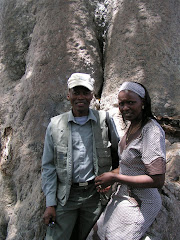Child Abuse Institutions are more common nowadays..
In all countries around the world today, there is no empirical evidence that counters the assertion that institutionalised children are exposed to multiple disadvantages and are vulnerable to both physical and sexual abuse (Utting, 1997; Tolfree, 1995).
The problems associated with orphanhood have reached new psychological, social, economic and political dimensions. It is evident that orphans face a plethora of problems stemming from abuse by those who are supposed to protect them, such as their caregivers, religious leaders and even teachers. They face impoverishment, stigmatisation, isolation and rejection by members of society because of their HIV status (STPA, 1999). Some of the emerging problems from the implementation of the Orphan Care programme in Botswana include separation of orphan siblings between relatives for ulterior motives.
Relatives strive to have custody of orphans in order to access their monthly food basket and other benefits such clothing and toiletry. On the basis of these problems, the Government has been involved in extensive consultations with stakeholders to find ways of addressing the myriad problems faced by orphans and other vulnerable children. As a result the Government is developing Foster Care Regulations known as Children in Need of Care Regulations which will regulate and formalise the fostering of orphans. Some of the orphans can not be fostered by anybody because they are visibly showing signs and symptoms of AIDS and as such, residential care becomes the only option for such children.
A total of 189 countries, including Botswana, signed the United Nations Declaration of Commitment on HIV/AIDS in June 2001. This Declaration is particularly relevant to children growing up without families. Articles 65–67 of this Declaration spell out the obligations of states in relation to the care and protection of orphans and other children made vulnerable by HIV/AIDS. Article 65 spells out that by 2003, develop and by 2005 implement national policies and strategies to build and strengthen governmental, family and community capacities to provide a supportive environment for orphans and girls and boys infected and affected by HIV/AIDS. This include providing appropriate counselling and psychosocial support, ensuring their enrolment in school and access to shelter, good nutrition, health and social services on an equal basis with other children. Further more, to protect orphans and vulnerable children from all forms of abuse, violence, exploitation, discrimination, trafficking and loss of inheritance, as reflected under Article 66. The Declaration wants to ensure non-discrimination and full and equal enjoyment of all human rights through the promotion of an active and visible policy of de-stigmatisation of children orphaned and made vulnerable by HIV/AIDS as stated under Article 67.
Finally, the Declaration will pressurise the international community, especially donor countries, civil society, and the private sector, to complement effectively national programmes. These would also support programmes for children orphaned or made vulnerable by HIV/AIDS in the affected regions and in countries at high risk and to direct special assistance to sub-Saharan Africa.
References
Short Term Plan of Action (STPA) on the Care of Orphans in Botswana. Ministry of Local Government, Lands and Housing. 1999. Gaborone. Botswana.
Tolfree, D. K. (1995) Roofs and Roots: The Care of Separated Children in the Developing World. Aldershot. Arena.
Tolfree, D.K. (2003). Save the Children Sweden. Stockholm. Sweden.
Toynbee, B (1998) " Children of despair." The Guardian, 3 June, 22.
Triseliotis, J., Sellick, C. and Short, R. (1995) Foster Care. London: Batsford.
Subscribe to:
Post Comments (Atom)











No comments:
Post a Comment